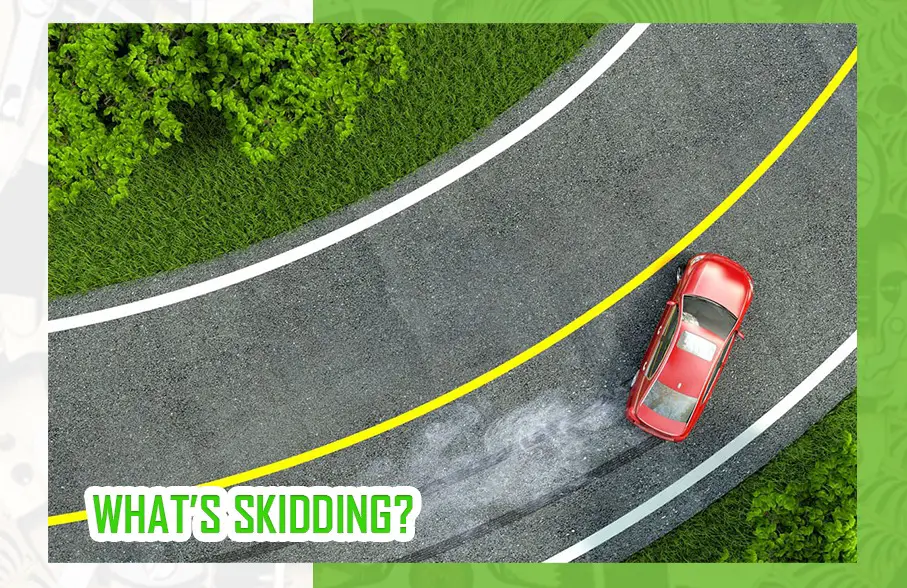The Causes of Locked Wheel Skids
If you’ve ever been driving on a wet or icy road and felt your wheels start to slip, you know how scary it can be. Your heart races as you lose control of the car, and all you can think about is the possibility of crashing.
But don’t panic! In most cases, locked wheel skids are easily remedied and pose no serious threat to your safety.
What’s Skidding?

We all know what it feels like to skid on a slippery surface. Your heart races as you lose control of your car, and the world seems to slow down as you slide helplessly towards an obstacle. But what exactly is wheel skidding?
Simply put, skidding occurs when a tire loses traction with the ground and starts to slip. This can happen for a variety of reasons, but most often it’s due to excessive speed or braking on a wet or icy surface.
When skidding occurs, the car’s wheels are no longer able to provide the necessary grip to keep the vehicle moving in a straight line. As a result, the car will begin to veer off course, potentially leading to a crash.
While skidding can be terrifying, it’s important to remember that it’s not necessarily indicative of driver error. Sometimes, even the best drivers can find themselves in a skid. The best way to avoid a skid is to drive slowly and carefully in conditions that might be conducive to slipping, such as icy roads or heavy rain.
But if you do find yourself in a skid, there are some things you can do to regain control of your vehicle. By steering into the skid and gently accelerating, you can help your tires regain traction and get back on track.
So next time you hit a patch of ice or find yourself driving in treacherous conditions, remember: take it slow and stay alert, and you’ll be sure to avoid any wheel skidding drama.
Here’s what you need to know about the causes of locked wheel skids and how to prevent them.
The Causes of Locked Wheel Skids

There are Five reasons why your wheels might start to lock up: brake failure and loss of traction.
Brake failure is usually caused by a problem with the hydraulic system that supplies pressure to the brakes. If the fluid level in the system is too low, the brakes will not work properly. This can happen if there is a leak in the system, or if the fluid has become contaminated with water or air.
Loss of traction is most often caused by driving on a wet or icy road. When your tires lose contact with the road surface, they can no longer provide the friction needed to stop or turn the car. This can happen even if your brakes are in perfect working order.
Let’s Look some causes of locked wheel skids
-
Over-Braking
One of the primary causes of locked wheel skids is overbraking. Slamming on the brakes too forcefully can lead to a sudden loss of traction, causing the wheels to lock. This scenario is more common in emergency braking situations, and it emphasizes the importance of maintaining a balanced and controlled braking force.
Preventive Tip: Practice smooth and progressive braking to avoid abrupt stops. Anticipate stops in advance and apply the brakes gradually to maintain tire traction.
-
Poor Road Conditions
Road conditions play a significant role in wheel skidding. Wet, icy, or snowy surfaces reduce tire grip, making it easier for the wheels to lock up. Uneven road surfaces and debris can also contribute to skidding.
Preventive Tip: Adjust your driving speed according to the road conditions. Increase following distances and be cautious on slippery surfaces. Regularly check your tire tread and replace tires that are worn or damaged.
-
Inadequate Tire Traction
Worn-out tires with insufficient tread depth compromise traction and increase the risk of wheel skids. Underinflated tires can also contribute to skidding, as they reduce the tire’s contact area with the road.
Preventive Tip: Regularly check tire tread depth and ensure tires are properly inflated according to the manufacturer’s recommendations. Replace worn-out tires promptly to maintain optimal traction.
-
Vehicle Imbalance
Uneven weight distribution in a vehicle, especially during sudden acceleration or deceleration, can lead to locked wheel skids. This imbalance alters the normal force acting on the tires, affecting their grip on the road.
Preventive Tip: Load your vehicle evenly and distribute weight properly. Avoid abrupt acceleration or deceleration, especially when carrying heavy loads.
-
Faulty Brake System
A malfunctioning brake system can contribute to locked wheel skids. Issues such as worn brake pads, malfunctioning anti-lock braking systems (ABS), or uneven brake distribution can compromise braking efficiency.
Preventive Tip: Regularly inspect and maintain your vehicle’s brake system. Ensure that ABS is functioning correctly, and promptly address any issues with the brake components.
How to Prevent Locked Wheel Skids
The best way to prevent locked wheel skids is to practice defensive driving and be aware of potential hazards on the road. Here are some tips:
- Leave plenty of space between your car and the car in front of you so that you have time to stop if necessary.
- Be especially cautious when driving on bridges, overpasses, or other elevated surfaces, as these can freeze before other parts of the road.
